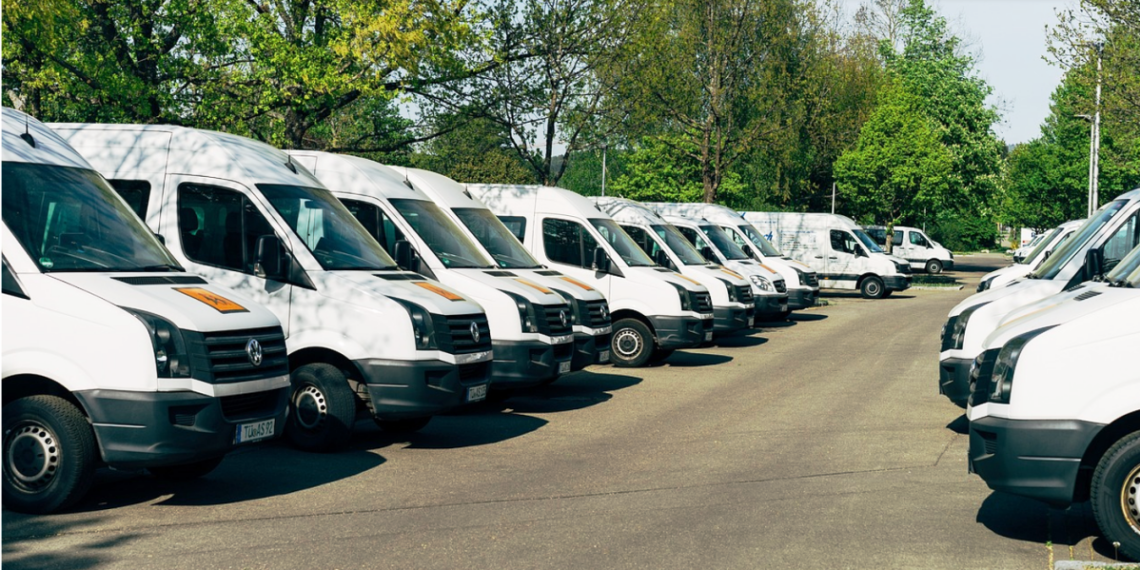Advances in technology have been a game changer for many businesses looking to elevate their operations and make more money, writes CHARLIE FLETCHER:
These technologies can come in many forms to help with various tasks and processes, including fleet management.
If you are a business that oversees a fleet of vehicles, you are likely all too aware of how costly that can be, and even time-consuming.
However, thanks to advanced fleet tech software, businesses can now manage their fleets easily, saving time and money, and improving many things, such as driver safety and vehicle maintenance.
The Benefits of Digitizing Your Fleet
Depending on the specific technologies you decide to implement to modernize your fleet, your business could experience a range of benefits, which can include:
- Reduced fuel consumption;
- Reduced vehicle downtime;
- Lower maintenance expenses;
- Improved communication and decision-making;
- Route optimization;
- Improved safety;
- Real-time tracking;
- Improved monitoring for preventative management;
- Greater productivity;
- Better customer service.
As a whole, fleet management technologies offer greater visibility into fleet operations, enabling your business to make more informed decisions that can significantly improve your bottom line.
Technologies to Optimize Fleet Management
The most effective fleets are those managed using various technologies that provide a comprehensive toolset for overall fleet optimization. While there are general fleet management software tools, the term fleet management technology encompasses a variety of tools, each that serves its own purpose to improve fleet operations.
Autonomous Vehicles
While the roads aren’t flooded with self-driving cars yet, numerous companies are already utilizing or considering using autonomous vehicles for their fleets.
While fleet management tools can be used with any kind of vehicle, many autonomous cars have advanced tools already built into their systems, which makes them perfect for businesses that want to go above and beyond to optimize their fleet.
Maintenance Management Software
When it comes to fleet management software, perhaps the most important tool to have is one that helps with vehicle maintenance. Well-maintained vehicles are often the cornerstone of success for any business that runs a fleet as too many maintenance issues can be one of the most expensive aspects of fleet management.
Maintenance management software, such as those that provide remote diagnostics, enables you to better plan for and track when vehicles in your fleet require service. These systems work fast and recognize when there is an issue, sending out an alert immediately to prevent the issue from worsening. They can also send out alerts when it is time for preventative maintenance, which can help keep issues from occurring in the first place.
Fleet Telematics
Fleet telematics systems use GPS technology in combination with onboard diagnostics to track things like speed, location, and fuel consumption.
They can also work with maintenance management tools or already have maintenance alerts built-in. These systems work by using an onboard device that transmits data to management software, enabling you to view and analyze the data and make more informed decisions about your fleet.
Route Optimization
Another costly aspect of running a fleet is fuel consumption. However, route optimization tools can solve this problem by using an algorithm that calculates the most fuel-efficient routes for your drivers.
These tools take various factors into account, such as traffic, distance, and delivery schedules. They can also monitor fuel consumption across the fleet and identify patterns that could suggest issues or inefficient usage.
Driver Safety Systems
Some tools don’t just monitor the vehicles but they can monitor driver behavior as well. These systems are focused on improving driver safety by monitoring things like speeding and hard braking. They also provide coaching to drivers and can include features that help drivers adhere to federal compliance regulations, such as hours of service.
Collaboration Tools
When you are managing a fleet of drivers, communication is also critical to the success of your business. So in addition to fleet management tools, look for systems that enable you to communicate with your drivers while they are on the road.
There are a wide variety of collaboration tools that can help with that today, such as Asana, Slack, Zoom, and Microsoft Teams. All of these tools work with mobile devices like smartphones or tablets, so your drivers can easily stay in touch while on the go.
Expanding Your Fleet: What to Look For
Once you have the tools you need to better manage your fleet, you may find that it will be easier to expand your fleet and grow your business to include more vehicles. Acquiring new vehicles can significantly boost your operations.
However, it’s important to make sure you are buying the right vehicles for your business. The vehicles you have used in the past might not be the best choice moving forward, so it’s wise to consider what will work best for your current needs and the needs your business may have going forward.
For example, it may be a good idea to consider adding some autonomous or electric vehicles to your fleet to improve things like fuel consumption and driver safety. You should also look for cars or trucks that have advanced driver assistance features, such as automatic braking and lane assist.
It’s not just about buying vehicles that look good, but acquiring those that can help you optimize your fleet and run a more efficient and safer business.
Final Thoughts
It’s important to take the time to evaluate the needs of your business and your fleet to determine what technologies and vehicles will work best. These things can require a large upfront investment but are well worth it when they help you stay on top of maintenance, boost your operations, and increase your bottom line.
[Featured Image Source: Pexels]







Comments 1